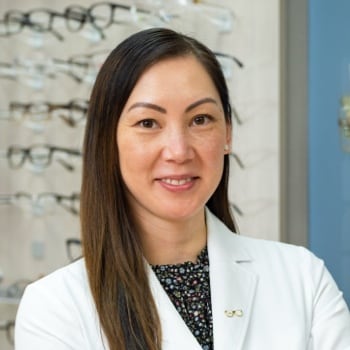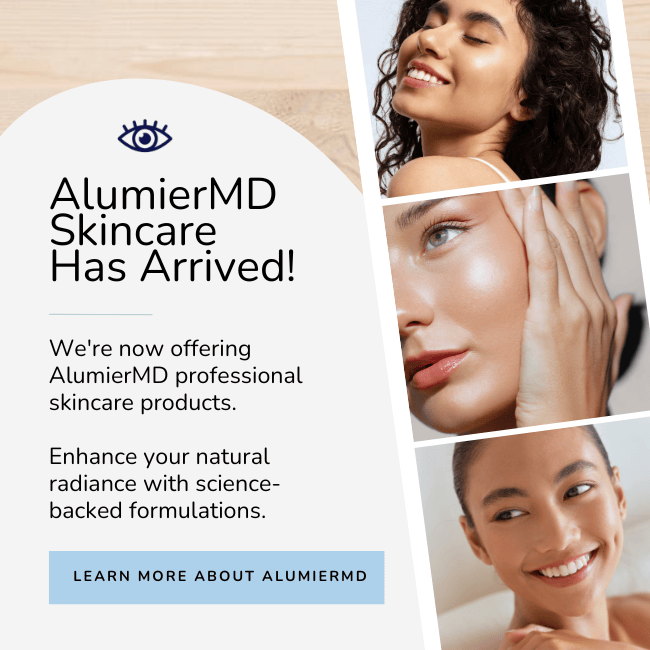Dry eye disease is an issue for many. If you’ve experienced the symptoms of dry eyes, then you know how uncomfortable it can be. Fortunately, there are many ways to treat this condition, including vitamin supplements.
Vitamins have countless benefits, including protecting and promoting healthy eyes. For dry eyes, consider taking:
- Vitamin A
- Vitamin D
- Omega-3
An eye exam can help uncover the underlying cause of your dry eyes, identify potential nutrition gaps that may contribute to your condition, and create a personalized treatment plan to reduce your symptoms.
Vitamins to Support Eye Health
The food you eat and the supplements you take can significantly impact your eye health. Certain vitamins and nutrients are good for the eyes and can support dry eye relief, especially when used alongside other treatment methods.
Vitamin A
Vitamin A is essential for eye health and can help to prevent dry eye disease. It helps support healthy tear production and enhances tear quality.
A vitamin A deficiency can negatively impact your tear film, the layer of tears that sits on your eyes. Vitamin A is a powerful antioxidant and may help prevent macular degeneration.
While you can take vitamin A supplements, absorption from vitamin A-rich foods is often more efficient. Foods with lots of vitamin A include:
- Orange fruits and vegetables, like sweet potatoes, pumpkin, carrots, and cantaloupe
- Kale, spinach, and collard greens
- Egg yolks
- Red peppers
Fatty fish, liver from beef or chicken, cheddar cheese, and butter are also high in preformed vitamin A.
Vitamin D
Vitamin D is the “sunshine vitamin.” It’s synthesized in our skin when we come into contact with ultraviolet radiation from the sun.
Since we live in the northern hemisphere, we’re at higher risk of vitamin D deficiency, which can contribute to dry eyes. Supplementing vitamin D can help reduce inflammation and promote improved tear quality.
Other potential health benefits of vitamin D include:
- Reduced risk of osteoporosis
- Improved physical strength
- Mood disorder management
- Reduced risk of type 1 diabetes
- Cancer prevention
Fortunately, vitamin D can also be found in food, such as:
- Cod liver oil
- Salmon
- Tuna
- Beef liver
- Whole eggs
- Sardines
Many dairy products are also fortified with vitamin D to help us improve our intake. If you’re lactose intolerant, you can find vitamin D in fortified orange juice and cereal.
Omega-3 Fatty Acids
Omega-3 fatty acids are great for dry eyes. This fatty acid helps reduce inflammation that contributes to dry eye disease, particularly if you also have computer vision syndrome, ocular rosacea, or evaporative dry eye.
Omega-3s are created using fish oil supplements or vegan marine sources like algae oil, and they provide similar effects.
Dry Eye Treatment Options
Beyond supplements and nutrition, there are many effective dry eye treatment options available, ranging from lifestyle changes to prescription medications.
Artificial Tears
Over-the-counter artificial tears can provide relief for mild to moderate dry eye disease. These drops add moisture to the eyes to rehydrate them and reduce dryness and irritation.
They come in various formulas like gels, ointments, and liquid drops. But if you’ve never used them before, talk to your eye doctor so they can recommend the right type for you.
Lifestyle Changes
In some cases, dry eye symptoms can be lessened or prevented by making simple lifestyle changes.
- Make a conscious effort to blink more often when using a screen or reading a book.
- Take lots of breaks to rest your eyes when working on a computer.
- Use a humidifier—especially during the winter—to add moisture to the air in your home.
- Stay hydrated by drinking plenty of water.
Prescription Medications
If artificial tears and lifestyle changes don’t provide enough relief, your eye doctor may prescribe medicated eye drops to treat dry eye symptoms. Many of these drops contain lubricating ingredients that help your eyes stay moist, while others include anti-inflammatory ingredients to reduce inflammation in your eye and improve your tear production.
Intense Pulsed Light (IPL) Therapy
If you have chronic dry eyes caused by meibomian gland dysfunction (MGD), intense pulsed light (IPL) can provide a long-term solution. IPL uses targeted pulses of light to warm your meibomian glands and melt away the blockages that are impeding healthy oil production.
IPL can relieve symptoms by:
- Improving tear break-up time, keeping your tears in your eyes longer
- Eliminating blood vessels that contribute to inflammation
- Reducing the amount of Demodex mites and bacteria on the eyelids
- Restoring meibomian gland function

Treat the Source of Your Dry Eye Disease
Dry eye disease can be frustrating and uncomfortable. But there are many options to help manage it, so there’s bound to be a solution that works for you. Talk to your eye doctor at Eyes on Plainville to help you find relief.
Schedule an appointment for an eye exam and begin relieving irritating dry eye symptoms.





